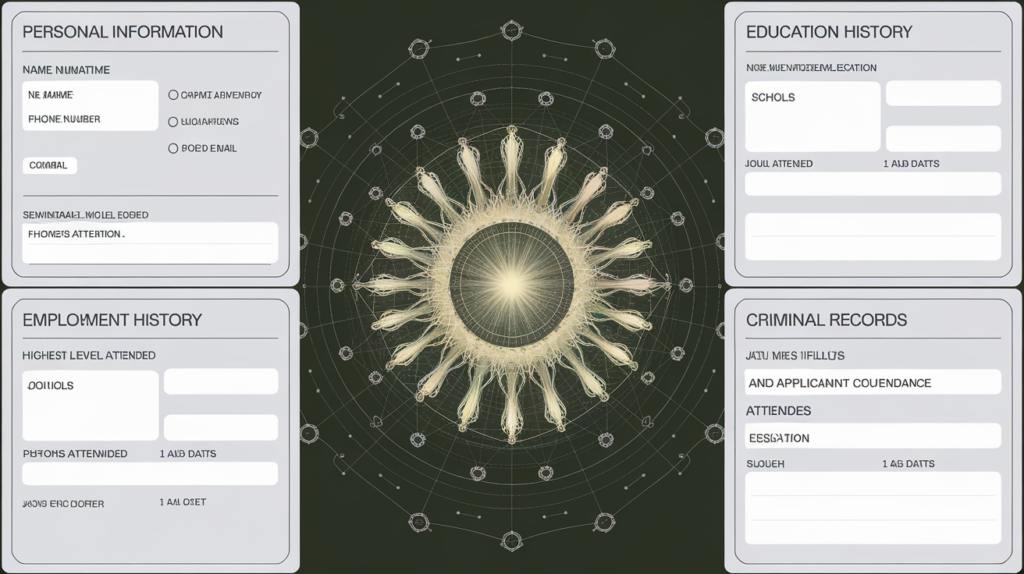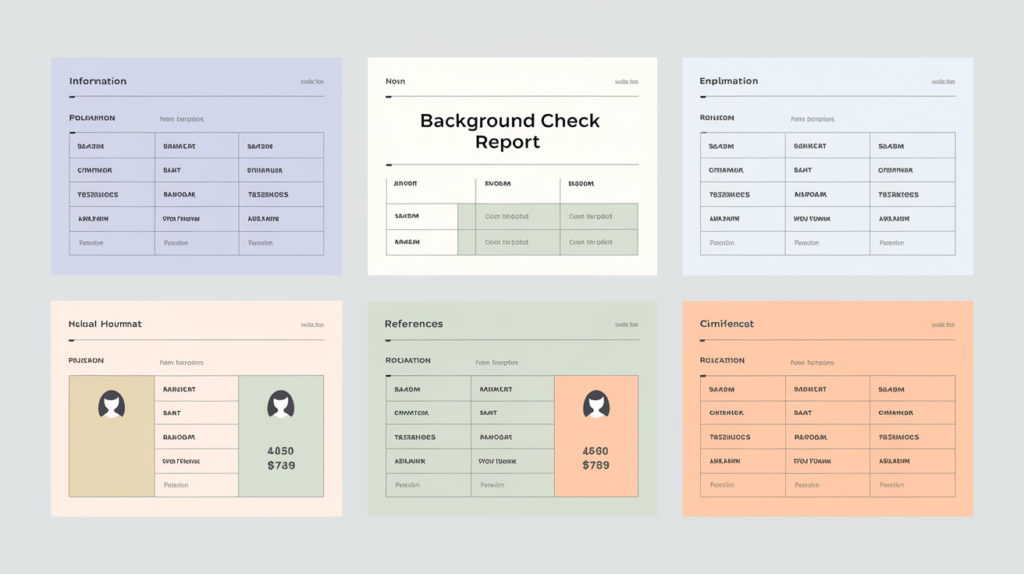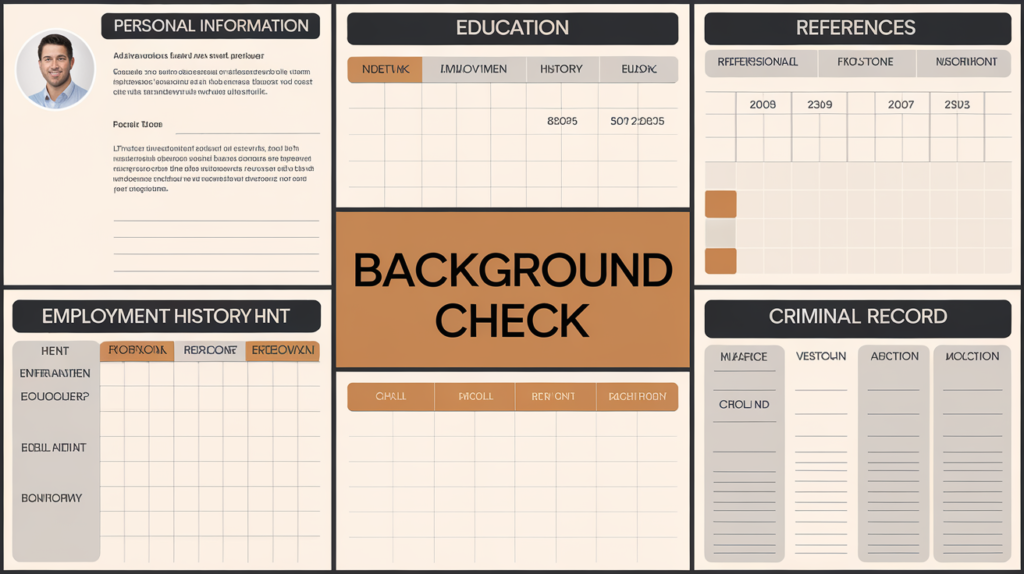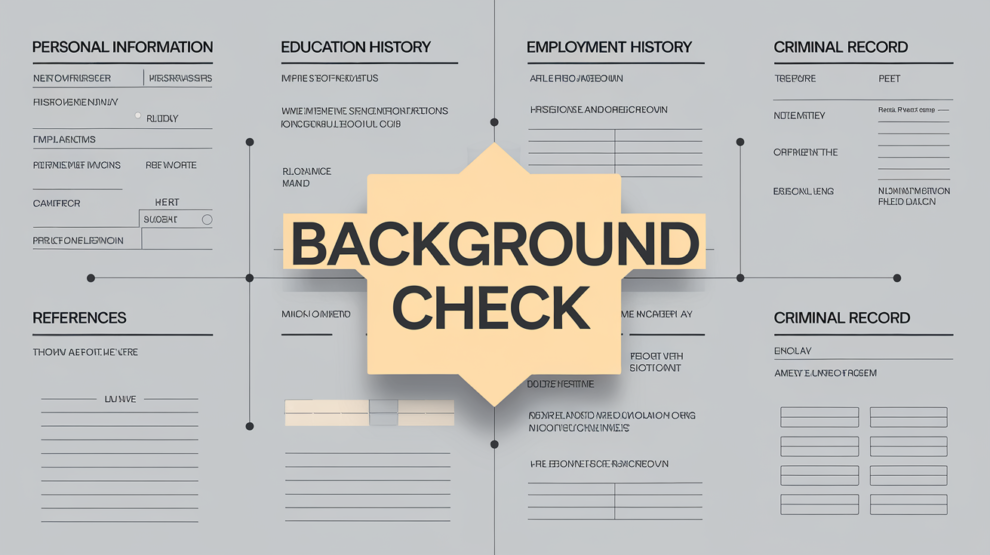A powerful hiring decision starts with a clear, compliant, and comprehensive Background Check Report Template. Discover how a well-structured Background Check Report Template can streamline your screening process, reduce hiring risks, and ensure full legal compliance—whether you’re in HR, compliance, or executive leadership.
Table of Contents
In today’s fast-paced and highly regulated business environment, conducting thorough background checks is not only recommended but often required. Whether you’re hiring new employees, screening tenants, or vetting volunteers, a well-organized background check report template is essential to maintaining compliance, consistency, and accuracy.
This guide will explore the importance of using a background check report template, what should be included, how to customize one for your organization, and best practices for creating a reliable and legally compliant report. We will also provide a sample layout, cover frequently asked questions, and include a conclusion to help summarize your takeaways. The keyword “background check report template” is used throughout this article to ensure you understand every aspect of this critical HR tool.
Why a Background Check Report Template Matters
Using a structured background check report template allows HR departments, landlords, and third-party screening providers to maintain consistency in evaluating candidates. It helps standardize how information is collected, evaluated, and reported.
Without a background check report template, critical information might be omitted, inconsistencies may arise, and the organization may open itself up to legal liabilities or biased hiring decisions. A comprehensive background check report template also simplifies compliance with federal and state laws such as the Fair Credit Reporting Act (FCRA) and Equal Employment Opportunity Commission (EEOC) guidelines.
What is a Background Check Report Template?
A background check report template is a standardized document used to record, organize, and present findings from a background screening process. The template can be paper-based, digital, or integrated into HR management systems. The purpose is to document critical information in a consistent format, making it easier to evaluate candidates fairly and uniformly.
A well-structured background check report template typically includes:
- Candidate identification information
- Screening categories (criminal history, education, employment, etc.)
- Results of each check
- Notes or flags for further review
- Compliance confirmations
Using a background check report template ensures that each background screening process is traceable, consistent, and aligned with internal and external requirements.
Essential Sections in a Background Check Report Template

Creating a thorough background check report template involves more than just listing what to check. Each section serves a specific compliance, safety, or risk mitigation purpose. Here’s a breakdown of every component you should include and why it matters.
1. Candidate Information
This section identifies the individual being screened and is foundational for accurate data retrieval across databases.
Includes:
- Full legal name – Ensures accurate matching across criminal and civil databases.
- Date of birth – A crucial identifier used in most background checks.
- Social Security number (last four digits) – Helps validate identity and locate records.
- Address history – Used for checking records across multiple jurisdictions.
- Position applied for – Indicates the level of scrutiny needed based on the role.
Why it matters:
Without precise identification, checks may return incorrect or incomplete information. A mismatch in name spelling or missing addresses can lead to legal issues or unfair decisions.
2. Criminal Background Check
A vital component of any background check report template, this section assesses the candidate’s criminal record at various jurisdictional levels.
Includes:
- Federal and state criminal record searches
- County-level court records – Often the most up-to-date and relevant.
- Sex offender registry search
- Global watchlists (e.g., OFAC, INTERPOL, FBI Most Wanted)
Documentation:
- Case numbers
- Charges
- Disposition (e.g., dismissed, convicted, pending)
- Dates of offenses
Why it matters:
Employers must ensure a safe workplace. Positions involving children, financial assets, or sensitive data may require a clean record. The template ensures consistency and helps determine if a finding is relevant or disqualifying.
3. Employment Verification
This section verifies that the candidate’s employment claims match reality.
Includes:
- Employer name and address
- Job title and responsibilities
- Start and end dates
- Reason for leaving (optional)
- Verified by (HR staff, third-party service)
Why it matters:
Inflating job titles or faking experience is a common issue. Verifying this information through a structured template reduces hiring risks and potential liability.
4. Education Verification
This confirms that academic credentials claimed by the applicant are legitimate.
Includes:
- Institution name and location
- Degree awarded and field of study
- Dates of attendance
- Graduation date
Why it matters:
Certain roles, especially in law, medicine, or engineering, legally require specific educational qualifications. Verifying this through your background check report template helps avoid fraudulent claims and ensures regulatory compliance.
5. Identity Verification
Identity fraud is a growing concern in recruitment. This section validates that the candidate is who they claim to be.
Includes:
- SSN trace and validation
- Alias search (names the person has used before)
- Address history comparison
- Government-issued ID verification
Why it matters:
It helps uncover hidden identities, inconsistencies, or fraudulent applications, especially when combined with a criminal background search.
6. Credit History Check (if applicable)
Not all roles require a credit check, but when they do, this section assesses financial responsibility.
Includes:
- Credit score range
- Loan defaults or missed payments
- Collections, bankruptcies, liens
- Debt-to-income ratio (optional, sometimes used for executive roles)
Why it matters:
Used primarily for financial roles or positions of fiduciary responsibility. According to FCRA, candidates must consent to this check and be notified before any adverse decisions are made based on credit data.
7. Motor Vehicle Record (MVR) Check
Essential for roles where driving is part of the job—delivery, transportation, sales, or fieldwork.
Includes:
- Driver’s license number and class
- State of issuance
- Traffic violations
- Suspensions, DUIs, accidents
- License validity
Why it matters:
A poor driving record could indicate risk in a driving role and expose the company to liability in the event of an incident. This section ensures only safe, responsible drivers are hired.
8. Drug Screening Results
Mandatory for safety-sensitive positions or companies with strict drug-free policies.
Includes:
- Date and type of test (e.g., urine, saliva, hair follicle)
- Substances tested (e.g., marijuana, opioids, amphetamines)
- Test result (pass/fail)
- Medical Review Officer (MRO) notes (if any)
Why it matters:
Promotes workplace safety and reduces liability. Required under DOT and other federal guidelines for specific industries.
9. Professional License Check
Verifies that the applicant’s required professional licenses are current and valid.
Includes:
- License type and number
- Issuing authority
- Issue and expiration dates
- Status (active, expired, revoked)
- Disciplinary history
Why it matters:
For regulated industries like law, accounting, healthcare, or real estate, hiring someone with an invalid license could result in legal penalties or reputational harm.
10. Additional Notes and Observations
This flexible section is for recording qualitative observations or any contextual information that doesn’t fall neatly into other categories.
Examples:
- Notes from interview with a reference
- Internal risk rating (low, medium, high)
- Clarifications about inconsistencies
Why it matters:
Background checks aren’t just about ticking boxes—they require judgment. This section adds depth to the report and supports hiring decisions with context.
11. Compliance and Consent Acknowledgments
This section proves that the organization followed legal procedures throughout the screening process.
Includes:
- Signed consent from the candidate
- Disclosure forms issued
- Adverse action process documentation (if applicable)
- FCRA compliance notes
- Data protection and privacy compliance
Why it matters:
Non-compliance with FCRA, GDPR, or EEOC rules can lead to lawsuits and fines. This section ensures all legal steps are recorded and traceable.
How to Customize a Background Check Report Template

Not every role requires the same depth of screening. Customize your background check report template by considering:
Job Role Requirements
- A delivery driver needs an MVR check.
- A bank teller needs a credit check.
- A healthcare worker needs license verification.
Industry-Specific Compliance
- Finance roles may need FINRA-compliant templates.
- Aviation or defense may require federal clearance sections.
International Hires
- Add passport verification, international criminal checks, or local references.
Company Policy
- Some organizations have internal codes requiring periodic re-checks or deeper scrutiny for management roles.
Format Customization
- Create checklists to ensure no section is skipped.
- Use dropdowns for result status (Clear, Flagged, Pending).
- Integrate with your applicant tracking system (ATS).
Sample Background Check Report Template Layout
| Section | Description | Result | Verified By |
|---|---|---|---|
| Candidate Info | Name, DOB, SSN, Address | N/A | HR Admin |
| Criminal Check | Federal/State/County Records | Clear | Verified |
| Employment | Company A (2019–2022) | Verified | Company A HR |
| Education | XYZ University, B.S. | Verified | Registrar |
| Identity | SSN, Alias, ID | Verified | Database Match |
| MVR | No Violations | Clear | DMV |
| Drug Test | 5-panel test | Pass | LabCorp |
| License | RN License | Active | State Board |
| Notes | All records clean | Approved | HR Lead |
Common Mistakes to Avoid

- Skipping consent documentation
- Incomplete information on the template
- Misinterpreting results without context
- Failing to notify candidates of adverse action
- Inconsistent use of the template across departments
Benefits of a Background Check Report Template
- Standardizes documentation across all candidates
- Reduces the risk of human error or bias
- Helps demonstrate due diligence in case of audits or lawsuits
- Speeds up decision-making with clear, accessible data
- Simplifies onboarding and record-keeping
FAQs About Background Check Report Templates
What is the purpose of a background check report template?
The purpose is to provide a consistent, legal, and efficient way to document and analyze the results of a background screening process.
Can I create my own background check report template?
Yes, you can design a custom background check report template that aligns with your organization’s needs, provided it complies with relevant laws like the FCRA.
Is it legal to share background check report templates with hiring managers?
Yes, as long as the information is shared within the bounds of confidentiality laws and internal HR policies.
Do I need to use a background check report template for every hire?
Yes, to ensure consistency and reduce liability, every background screening should be documented using the same background check report template.
Conclusion
Creating and using a standardized background check report template is a cornerstone of responsible hiring and compliance. It ensures that every candidate is evaluated using the same objective criteria, improves organizational efficiency, and helps prevent legal missteps.
Whether you’re an HR professional, small business owner, or compliance officer, adopting a detailed and legally compliant background check report template will elevate your hiring practices and help protect your organization in the long run.
Remember, your background check report template should evolve with regulations, business needs, and technology. Review it regularly and customize it for each position to ensure optimal effectiveness.
If you’re not using a background check report template yet, now is the time to start.
Do Follow Dragcast on Social Media For More Such Content.












Add Comment